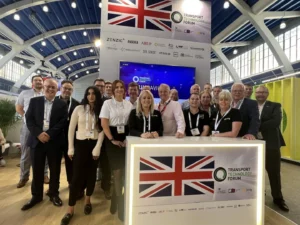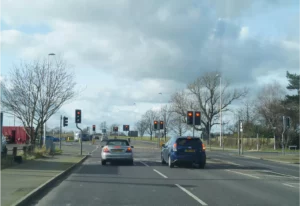The Transport Technology Forum is looking at the £70 million signals funding for English local authorities today (25 April).
This includes the £50 million already allocated for the Traffic Signals Obsolescence Grant and Green Light Fund, and the bidding process for the Intelligent Traffic Management Fund.
Follow our updates here:
10.00
The four main traffic signals suppliers – TRL, SWARCO, Yunex Traffic and Telent have been invited to give a presentation about their ideas for ITMF. But each has to bring an innovator with them.
First speakers are Chris Kettell and Immense Simulation’s Robin North.
Chris Kettell talks about TRL’s development of SCOOT adaptive traffic control over 47 years. SCOOT 8 has reduced human efforts to initially deploy, incident and anomoly detection, enhanced traffic modelling using AI new optimiser availability. It also has analytics and looks at pedestrian, cyclist and other vulnerable road users.
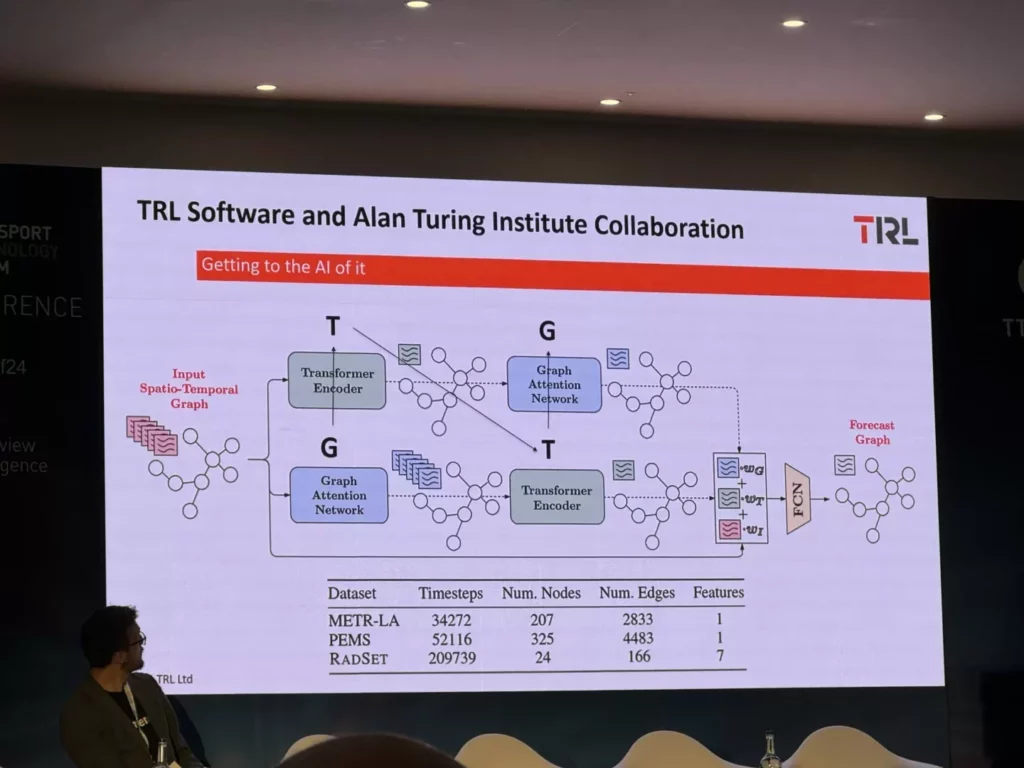
Robin North then explains Simulation as a Service – a digital replica of the transport system to test scenarios and simulate changes. This has applications such as fleet operations, infrastructure operations and regional planning. Developed with National Highways, Department for Transport, Oxfordshire County Council and Transport for London.
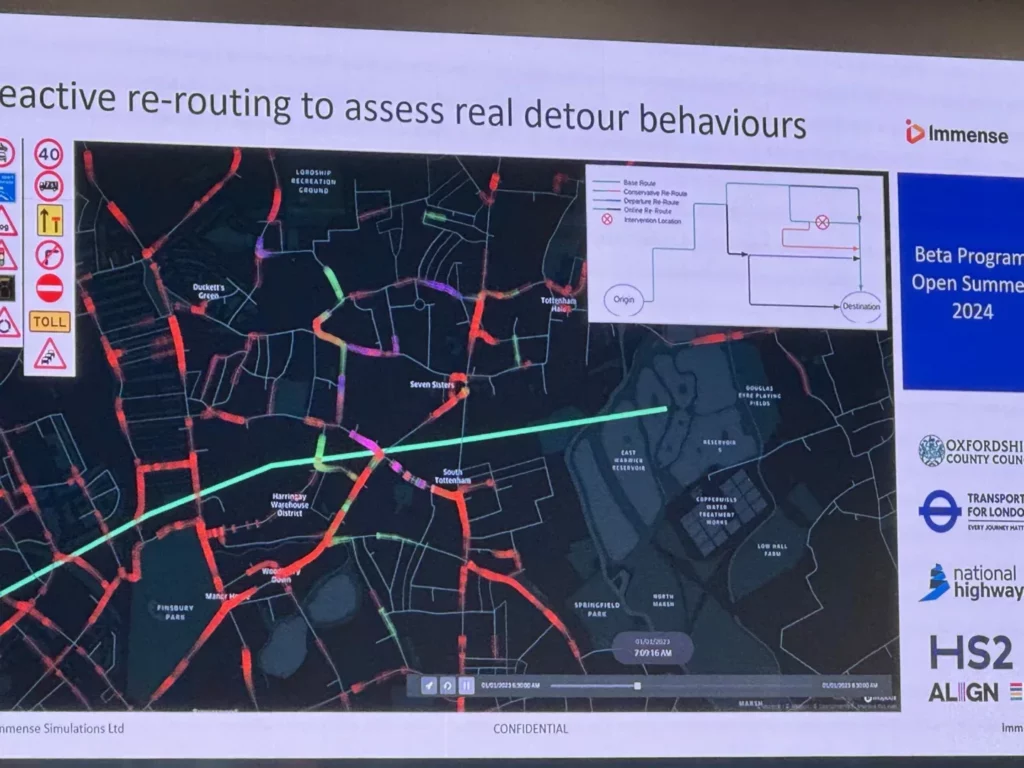
10.15
Yunex Traffic and Aimsun then take over.
Andy Hamilton and Gavin Bailey are speakers.
Andy Hamilton talks about a London-wide Fusion adaptive traffic control system. Explaining what Yunex does he says: “We do a lot of things on street”. He explains working with suppliers and sticking to standards.
Gavin Bailey from Yunex subsidiary Aimsun then talks about a project in Tees Valley using its traffic digital twin technology.
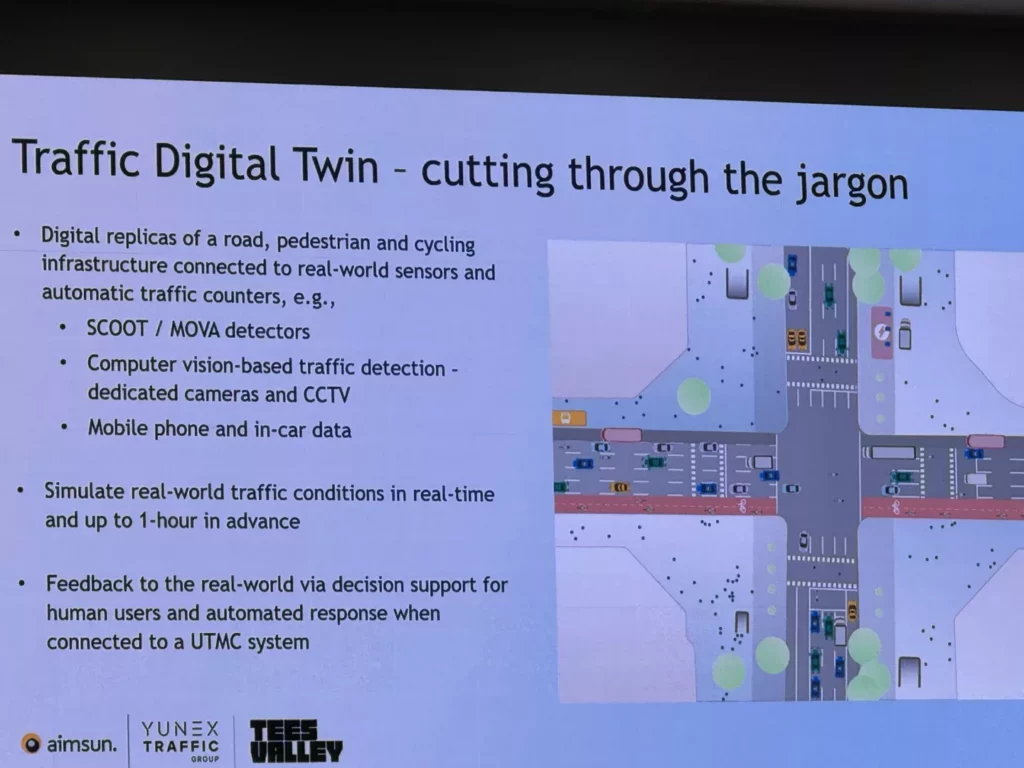
Explains how they consume data through sensors, add intelligence and simulation and allows users to code response plans and simulate potential traffic management on the network. The system also has incident detection and bus reliability functions.
Underlines digital twins and AI are not the end goal, they are an enabler.
10.33
Coffee break. More to follow.
11.18
It’s SWARCO’s turn for the supplier spotlight, with Jonathan Pokorny with Gary Lin of Monotch.
The companies signed a deal at Intertraffic last week.
Gary Lin gives an overview of Talking Traffic, a project facilitating the realtime data exchange across both public and private sectors to make more sustainable, safe and efficient travel.
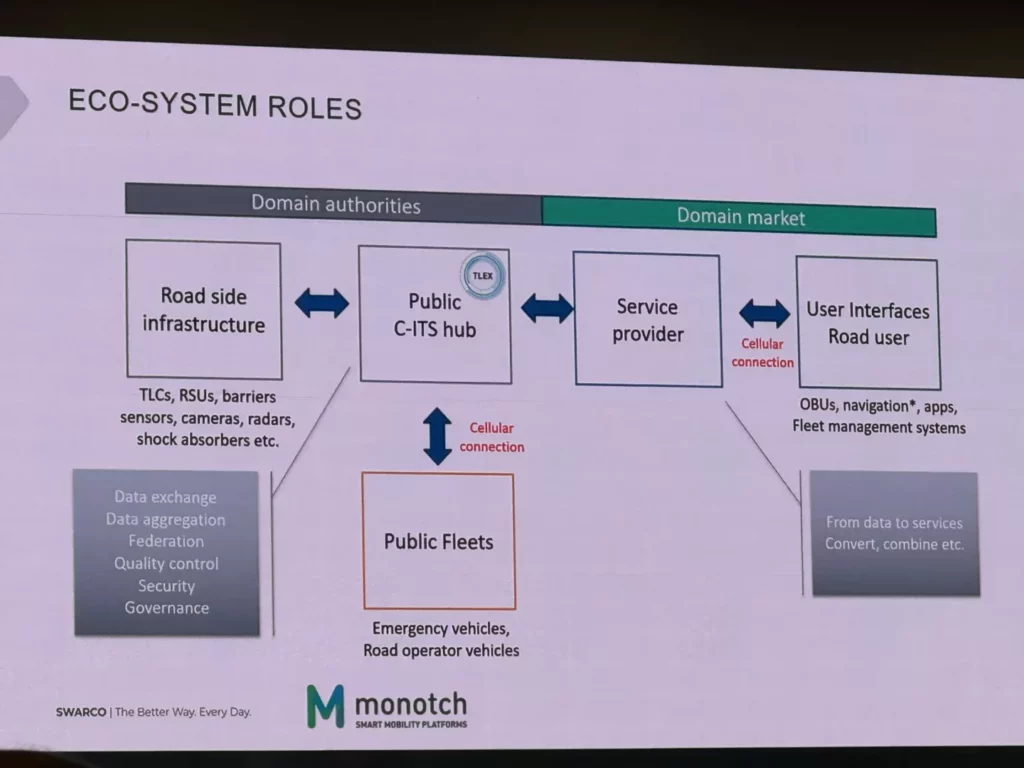
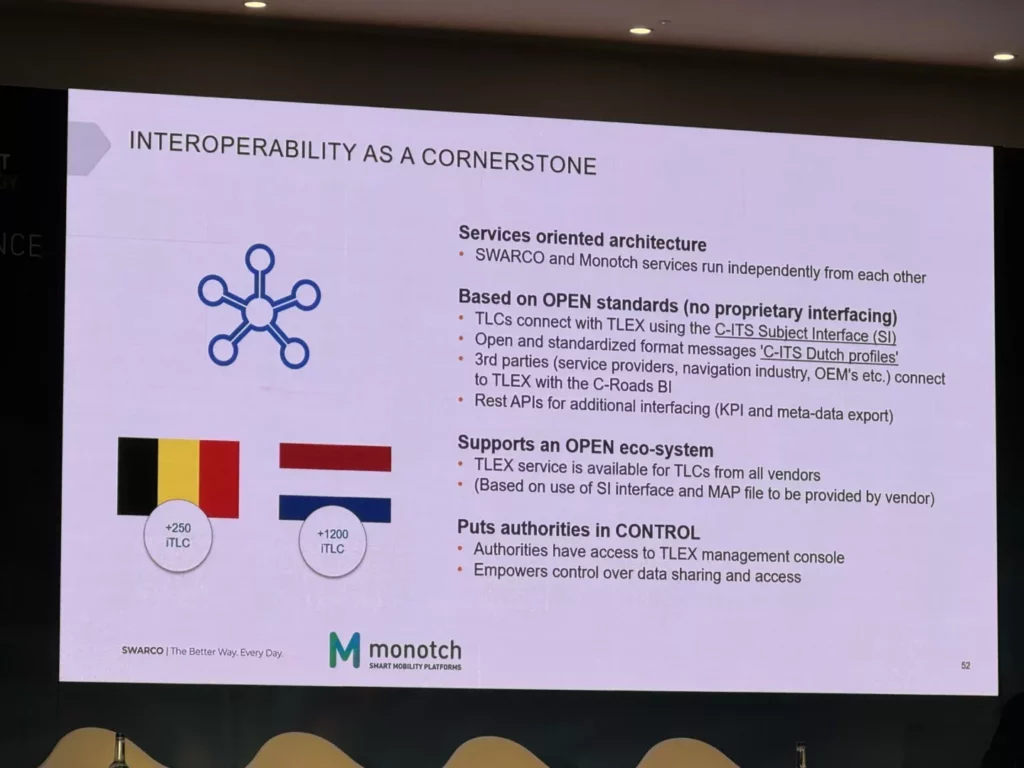
He explained traffic signal priority and how the Monotch system sits in the middle of data gathering and signal control.
Jonathan Pokorny gives an overview of a truck priority system at signals which delivers prioritisation and optimisation.
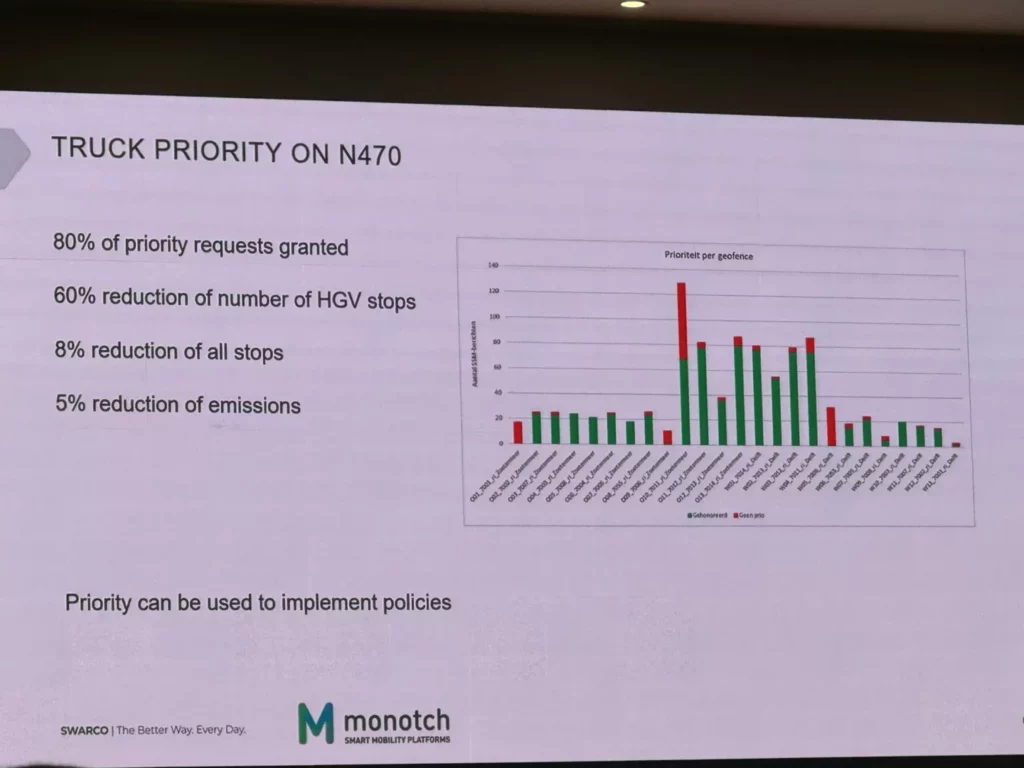
“This is real, and proven and not a test bed” – Jonathan Pokorny.
He outlines the IMFLOW product with traffic measurement and and estimation, traffic prediction and optimiser.
11.39
Rob Harding from Telent is the last supplier to speak.
Outlines a variety of cooperation using innovations and kit from SWARCO, VivaCity, Flir, AGD, smartmicro. Includes “policy sliders” where you can tweak traffic management based on political requirements.
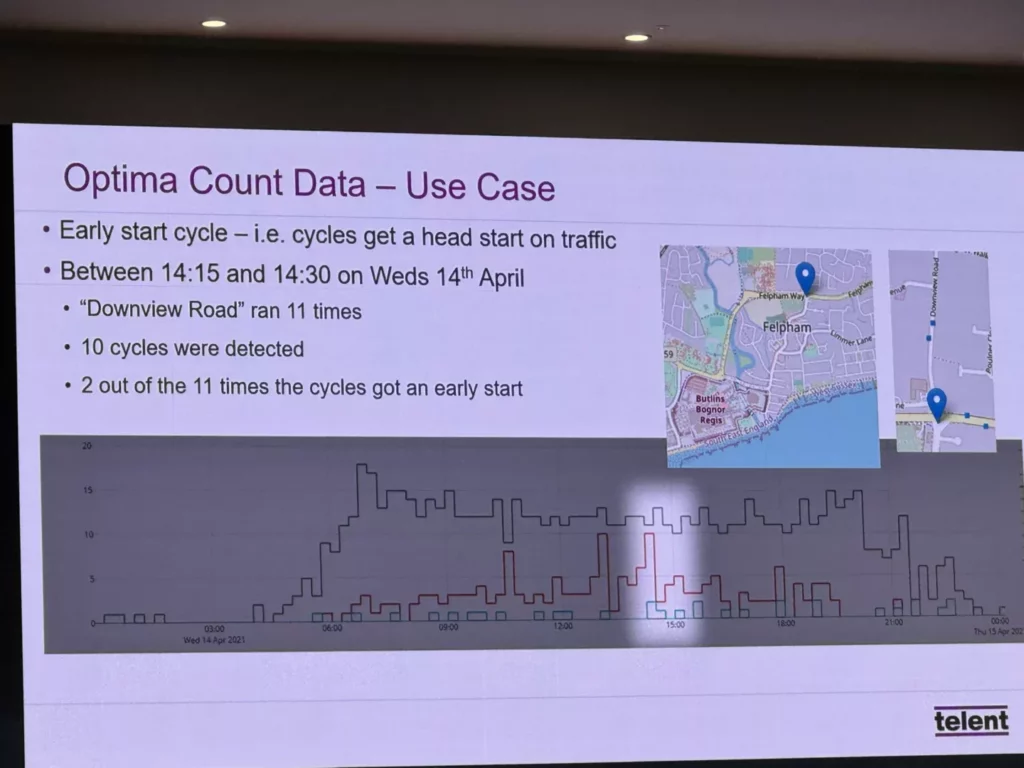

11.54
We now move onto talking about the Plan for Drivers, with Anthony Ferguson, Deputy Director at the Department for Transport.
He gives an overview of the plan for drivers and its five themes – smoother journeys, stopping unfair enforcement, easier parking, inconsiderate driving and transition to zero emission driving.

Next to come – National Parking Platform, Digital Traffic Regulation Orders and various consultation responses, calls for evidence results, guidance around LTNs, cross-pavement charging and the £20 million on Intelligent Traffic Management Fund.
12.10
Finally before lunch, Darren Capes gives a signals funding update – lessons learned from the submissions.
The ability to raise more money for signals is based how well the latest grants are spent, and so evidence is required.
The £70 million signals funding is the only part of the Plan for Drivers that involved significant spending.
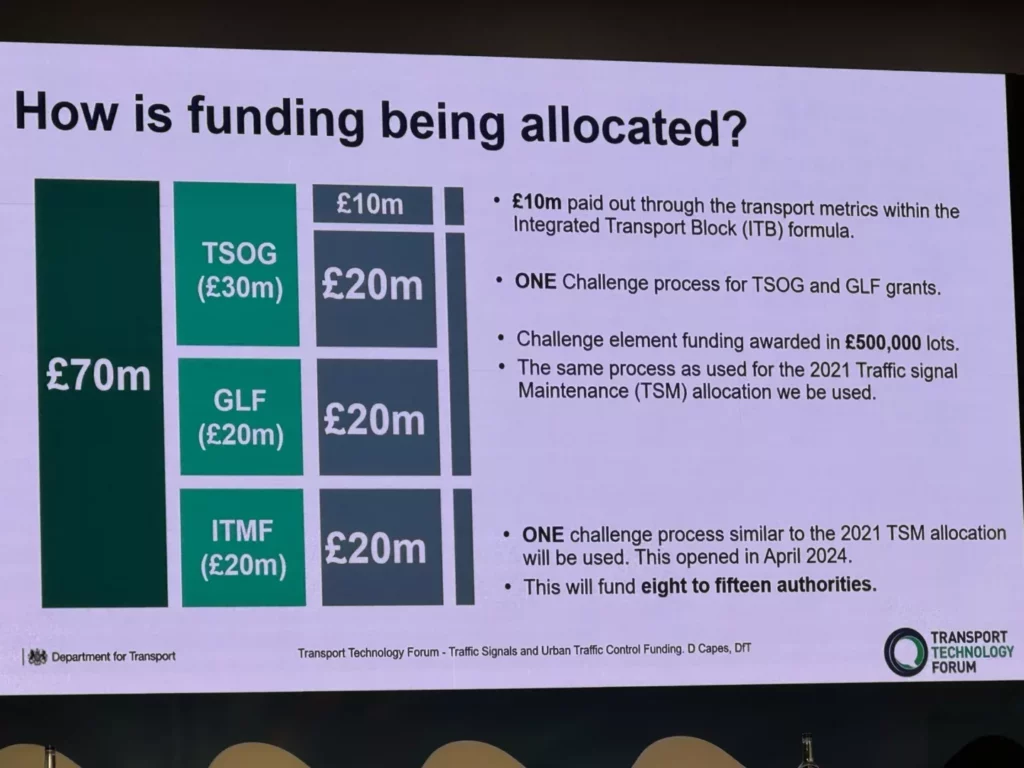
Darren praises authorities for bidding – 118 of 121 eligible authorities did bid. £500,000 lots for 67 bids were allocated to 80 areas.

“The success of this will help us build the case for more funding in the future”.
Says this had an unprecedented response, that the TTF helped get the money, ministers and Number 10 are taking a key interest, and we need to now prove this £70 million is a success so we can get more money later.
Lunch. More to follow from around 2.00.
2.07 Event restarts
Peter Lee from BSI announces Bridge AI, a £100 million Innovate UK grant-funded programme, with £5 million for AI feasibility studies. You can apply for up to £50,000 but must include an SME. Find out at bridgeai.net.
2.10
Now Adrian Withill of Derbyshire presents on showcasing TSOG and GLF funding.
Says the GLF money will maximise benefits of previous investment, a practical project – “normal and not exciting”, deliverable, highly beneficial, quick wins and junction modifications. Says significant investment from DfT is welcome, but needs continuity of funding and presence of skilled resources.
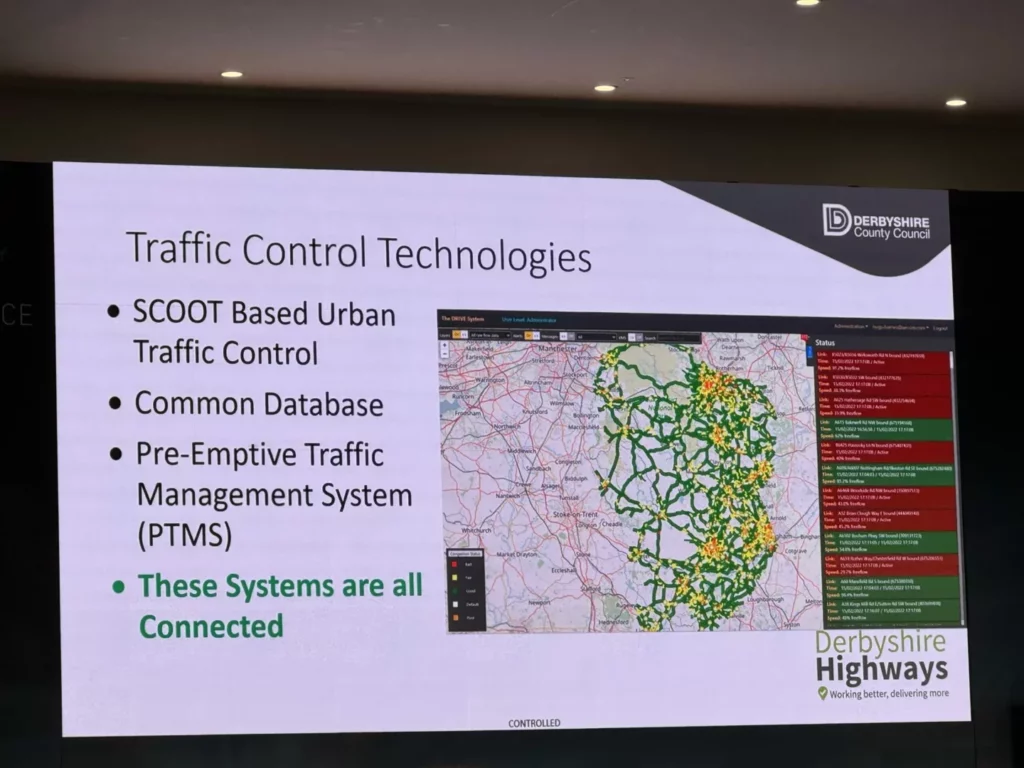

Plans are to modify phase, use image analysis detection to modify, in real time, Phase Maxima. they will revise and apply MOVA at relevant sites, restage signals, linking signals that otherwise operate independently, with automated or semi-automated changes in mode of operation.
2.33
Procurement is covered now with Crown Commercial Service and LCRIG.
Kerry Winstanley from LCRIG explains the new Suppliers’ Directory, connecting local authorities with supply chain organisations. She explains how LCRIG has worked with CCS to build the Innovation Procurement System, which cuts the time taken to get procurement in weeks rather than months.
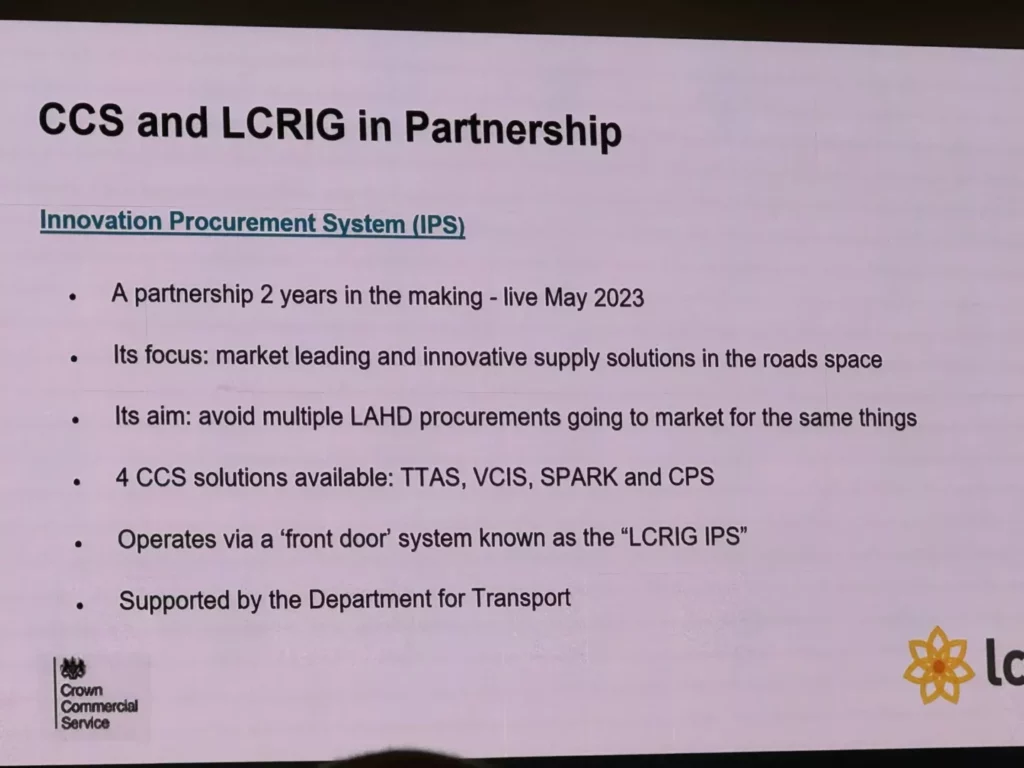
Steve Sopp and Sandra Sewell from CCS give more details.
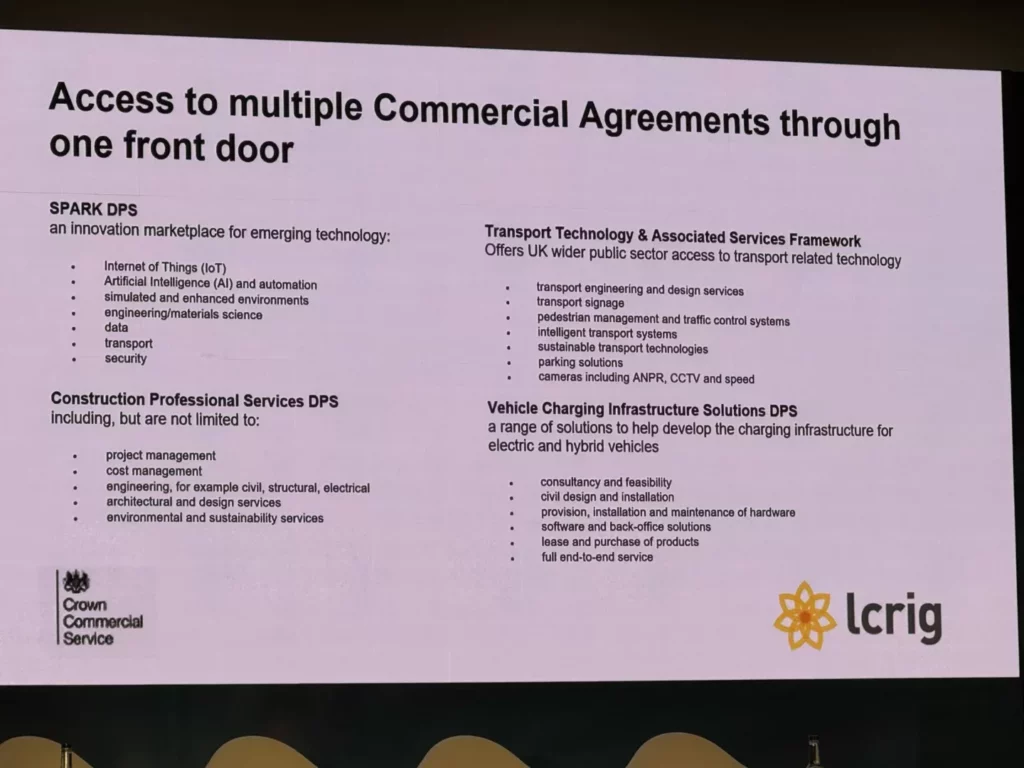
2.52
Darren Capes returns to the stage with Paula Claytonsmith, CEO of LCRIG, to talk about the ITMF – making the most of your submission. This is the final session of the day. They put the “fun” in Intelligent Traffic Management Fund.
Some of the more popular questions are around procuring innovative solutions, if they need three quotes. If you need help, do get in contact with LCRIG who can help.
The other question is – if I am a local authority, how do I find innovative solutions? Paula Claytonsmith points to the new database.
Another comment surrounds how people are keen to see the outputs from TSOG and GLF. Later in the year authorities will get together in regional groups to share lessons learned. That will also happen with ITMF – not just successes but things that have not worked.
Darren and Paula are asked about implementing things that have never been done before with no track record – how do you demonstrate competency in applications? Darren Capes says the funding is research money which means there is a different risk appetite and that they accept people are proposing new ways of working. Authorities need to give evidence of a workable solution and a plan that looks deliverable.
This is capital funding but authorities are expected to include the costs of resourcing it. The costs will involve evaluation.
It is reiterated that you must read the ITMF guidance and that applicants have a sense it will work. All this adds to the evidence base to show that more funding will help more councils deliver results.
They are questioned around the scope. There are technologies that will address the same problem – to reduce congestion. Will the department be keen to address a broader range of problem statements, rather than fixing the same problem ten times with ten different solutions? The answer is yes – to set up and buy with confidence. This is a way of giving authorities the ability to be early adopters and the hope is to get a spread of large and small, urban and rural authorities all doing something different. This has come out of the Plan for Drivers, so this is a steer of what is being looked for.
“Why should we share our ideas with anyone at the point of bidding, because we want the money?” The answer is that bidding is confidential, but you will be expected to share your answers once the bid is awarded.
“We cannot undertake procurement until we have the funding, but your rules say you want a consortium.” The answer is to provide evidence and credibility, for example letters of intent.
“At the end of the period, there will be successful bidders running good systems – is it right to include these in the bid to keep the systems running?” This is addressed in the guidance.
Three myths are corrected at the end:
Bids do not have to be £2 million. They can be less.
Smaller authorities have a chance to win bids.
The process has been designed to avoid those best at filling in procurement bids winning the money – it will go to the best schemes.
EVENT CLOSES




